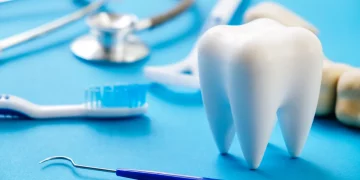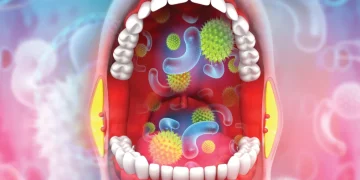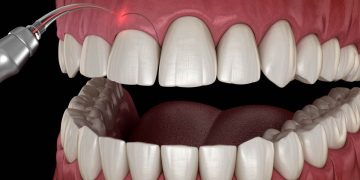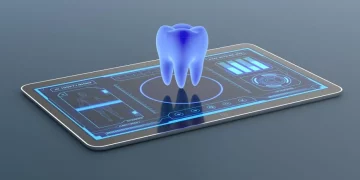Digital technologies have revolutionized nearly every corner of modern healthcare, and cosmetic dentistry sits at the forefront of this transformation. As patient expectations rise and aesthetic standards become increasingly precise, traditional “trust-the-process” approaches are giving way to highly visual, customizable, and data-driven methods. Among these advances, digital imaging—especially 3D modeling and virtual smile-simulation tools—has become one of the most powerful innovations shaping the future of smile makeovers.
Today, patients no longer need to imagine what their smile might look like after treatment. Instead, they can preview realistic digital outcomes, analyze small adjustments, understand treatment sequences, and make informed decisions with clarity and confidence. For dentists, digital imaging empowers better planning, improved accuracy, and streamlined workflows. Together, these benefits represent a new era in aesthetic dentistry—one where personalization, predictability, and precision take center stage.
Below is a deep dive into how digital imaging is changing the landscape of smile enhancement and what patients and clinicians can expect in the near future.
The Evolution of Smile Makeovers: From Guesswork to Digital Precision
For decades, smile makeovers relied heavily on the dentist’s technical skill and artistic intuition. While these qualities remain essential, traditional 2D photographs, impressions, and verbal explanations often left gaps in communication. Patients would hope the final result would match the dentist’s description, while clinicians worked to interpret the patient’s aesthetic desires as accurately as possible.
Digital imaging bridges this gap by offering:
- Objective visual data instead of subjective interpretation
- Accurate facial and dental measurements
- Instant visualization of potential results
- Enhanced collaboration between patient and dentist
This shift from uncertainty to predictability has created a new standard in cosmetic dentistry, especially in treatments such as veneers, crowns, orthodontics, bonding, and whitening.
How 3D Modeling Drives a New Level of Accuracy
3D modeling is now a cornerstone of modern smile design. Using advanced scanning technology, dentists can recreate the entire oral environment—including teeth, gums, and bite relationships—with remarkable precision.
1. Intraoral Scanning for Exact Replication
Traditional impressions can be uncomfortable and prone to distortion. In contrast, intraoral scanners capture thousands of images per second, generating a highly accurate digital model.
Benefits include:
- No gag-inducing impression trays
- Faster data collection
- Digital precision with minimal error
- Easy storage and sharing with labs or specialists via cloud platforms
2. 3D Facial Scanning for Full-Proportion Analysis
A smile cannot be designed in isolation—it must harmonize with facial proportions, contours, and expressions. Modern systems combine dental scans with full-face 3D imagery to create holistic aesthetic models.
Facial scanning helps assess:
- Lip mobility
- Smile lines
- Facial symmetry
- Proportional angles (chin, jaw, midline alignment)
This allows dentists to design a smile that enhances the entire face, not just the teeth.
3. Digital Mock-Ups and Virtual Planning
Once the digital models are created, dentists can overlay proposed changes to show patients exactly how their smile might transform.
Mock-ups can include:
- Tooth length and width adjustments
- Shade changes
- Alignment corrections
- Volume enhancement
- Recontouring and symmetry balancing
These 3D representations are far more realistic than traditional before-and-after photographs, because they are created based on each individual’s anatomical data.
Virtual Try-On: How Simulation Enhances Patient Experience
One of the most exciting technological advances is the virtual try-on experience, which allows patients to preview different smile designs in real time using digital overlays.
1. Realistic, Personalized Visuals
Virtual try-on technology uses augmented reality (AR) to display how specific treatments—veneers, aligners, whitening, gum contouring—would look on the patient’s own face.
This enables:
- Immediate understanding of treatment possibilities
- Realistic previews with high aesthetic accuracy
- Ability to “test” multiple options (e.g., shapes, shades, styles)
2. Enhanced Emotional Engagement
Seeing a transformed smile isn’t just informative—it’s emotional. Many patients gain confidence and motivation once they see what is achievable, often leading to:
- Higher acceptance rates
- More informed discussions
- Shared decision-making between dentist and patient
3. Reducing Decision Anxiety
Virtual simulations reduce the fear of the unknown. Patients no longer wonder, “What if I don’t like the result?” Instead, they can actively participate in designing the final outcome.
Why Precision Treatment Planning Is Redefining Outcomes
Digital imaging is not only about aesthetics—it also improves the functional and clinical success of treatments.
1. Predictable, Data-Based Planning
Combining 3D models with AI-driven software provides clinicians with detailed insights into:
- Tooth alignment
- Bite forces
- Arch form
- Gum symmetry
- Structural limitations
This ensures that the smile design is both beautiful and biomechanically sound.
2. Reducing Human Error
Digital workflows minimize traditional errors that stem from:
- Manual impressions
- Hand-drawn measurements
- Laboratory communication gaps
Instead, scanners and CAD/CAM systems produce restorations (crowns, veneers, bridges) with micron-level accuracy.

3. Improved Treatment Efficiency
Digital planning creates faster workflows by:
- Reducing chair time
- Streamlining lab collaboration
- Allowing same-day restorations through in-house milling
- Eliminating repeated adjustments or remakes
4. Customization Beyond Aesthetics
A personalized smile should reflect the patient’s personality, preferences, and lifestyle. Digital design tools allow dentists to tailor:
- Tooth contours (soft, bold, youthful, sophisticated)
- Smile width and balance
- Color gradients for natural translucency
This depth of customization creates results that feel truly individual.
How AI Will Shape The Next Phase of Digital Smile Design
Artificial intelligence is rapidly becoming integrated into digital imaging systems, further enhancing accuracy and efficiency.
Key AI-driven capabilities include:
- Automated diagnosis of misalignment, shade, symmetry, and gum conditions
- Predictive modeling of aging and long-term results
- Instant design suggestions based on global aesthetic datasets
- Automated treatment sequencing
AI’s ability to analyze patterns and simulate outcomes will make smile design more intuitive for clinicians and more empowering for patients.
The Future: Hyper-Personalized, Minimally Invasive, and Fully Digital
As technology continues to evolve, the future of smile makeovers will focus on:
1. Hyper-Personalization
Future software will integrate:
- Genetic markers
- Facial expression detection
- AI-enhanced personality profiling (not for diagnosis, but for stylistic preference planning)
Smiles will be crafted not only for facial harmony but also for lifestyle alignment.
2. Minimally Invasive Approaches
Digital planning ensures precise tooth preservation and optimal placement of restorations, aligning cosmetic outcomes with healthier biological outcomes.
3. Fully Digital Workflows
In the next decade, many dental clinics may operate almost entirely digitally:
- Digital consultations
- Remote treatment previews
- 3D-printed long-term restorations
- Instant simulation on patient phones
This will make cosmetic dentistry more accessible and transparent than ever.
Why Digital Imaging Will Continue to Elevate Patient Confidence
Ultimately, digital imaging is more than a technological trend—it is a paradigm shift in aesthetic dentistry. It empowers patients to be active participants in their transformation and enables dentists to deliver results with unprecedented accuracy. From 3D modeling to virtual try-on and precision-focused planning, these innovations ensure that every smile makeover is both predictable and personalized.
As digital systems become more advanced, intuitive, and immersive, the partnership between technology and dentistry will redefine what confidence, beauty, and personalization mean in smile enhancement.













































Discussion about this post